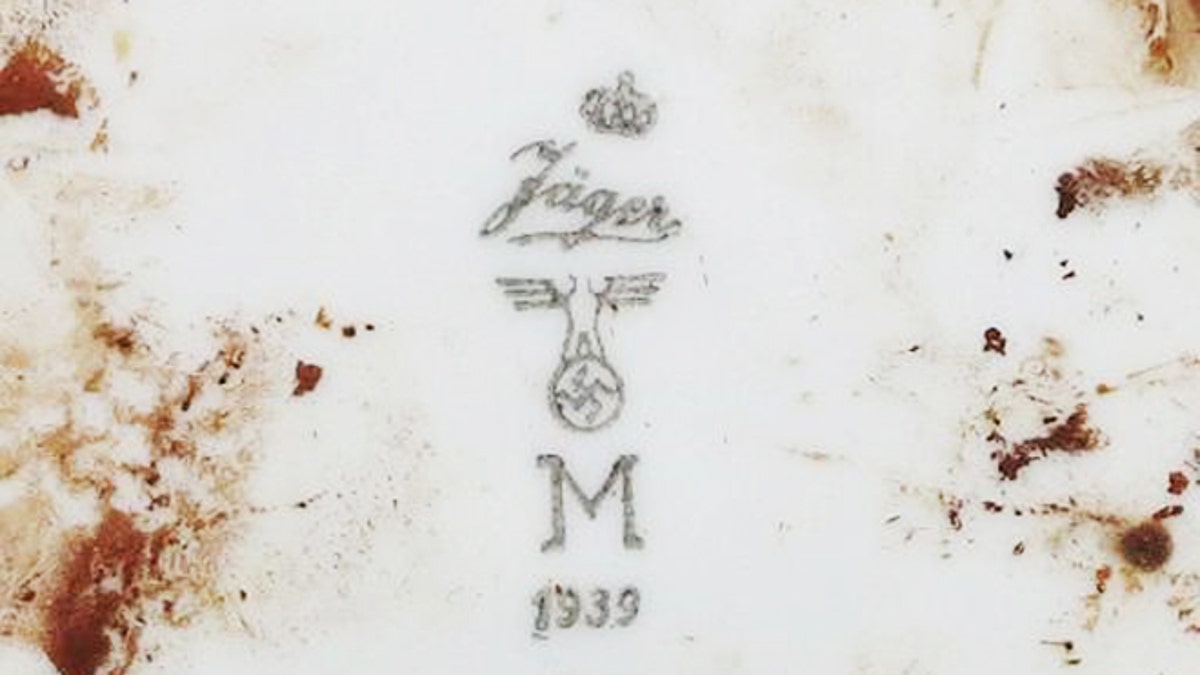
Nov. 21, 2013: Markings on a plate found by Indonesian archaeologists at the site of a sunken German submarine from the World War II era. (National Archaeology Centre/AFP)
A World War II German U-boat believed to be an infamous submarine that sank several Allied vessels has been discovered off the coast of Indonesia after local divers tipped off officials to the wreck’s existence.
Agence France-Presse reports the wreck contains at least 17 human skeletons, as well a trove of priceless historic artifacts that could shed new light on the naval conflict that was waged decades ago in the Pacific theater.
"This is the first time we have found a foreign submarine from the war in our waters," Bambang Budi Utomo, head of the National Archaeology Centre research team that located the sunken vessel, told the news agency.
[pullquote]
"This is an extraordinary find that will certainly provide useful information about what took place in the Java Sea during World War II."
Upon first inspection, Indonesian researchers told Agence France-Presse they believe the wreck to be the German submarine "U-168," which records show sank numerous Allied vessels before a Dutch submarine torpedoed it in 1944 off the archipelago nation’s main island of Java.
The German news magazine Der Spiegel, citing the newspaper Die Welt, writes that only one of the six torpedoes fired by the Dutch submarine at U-168 from a range of 900 meters detonated.
Der Spiegel writes 23 of the 50 people on board U-168 at the time of the encounter perished in the attack.
The news magazine also quotes a second German newspaper, which wrote that the Indonesian wreck could also be that of the doomed U-183, also sunk in the Java Sea in April 1945. Both U-boats were reportedly part of World War II Germany’s “Monsoon Group,” which was tasked with intercepting enemy shipping in the Arabian Sea and Indian Ocean.
Already, divers have reportedly retrieved dinner plates bearing swastikas from the submarine, along with batteries, binoculars and a bottle of hair oil, although officials said it is unlikely the wreck will be raised anytime soon.
"There could be more people in there,” Budi Utomo told Agence France-Presse. “We are open to assistance from the German government to research this area of their history.”
